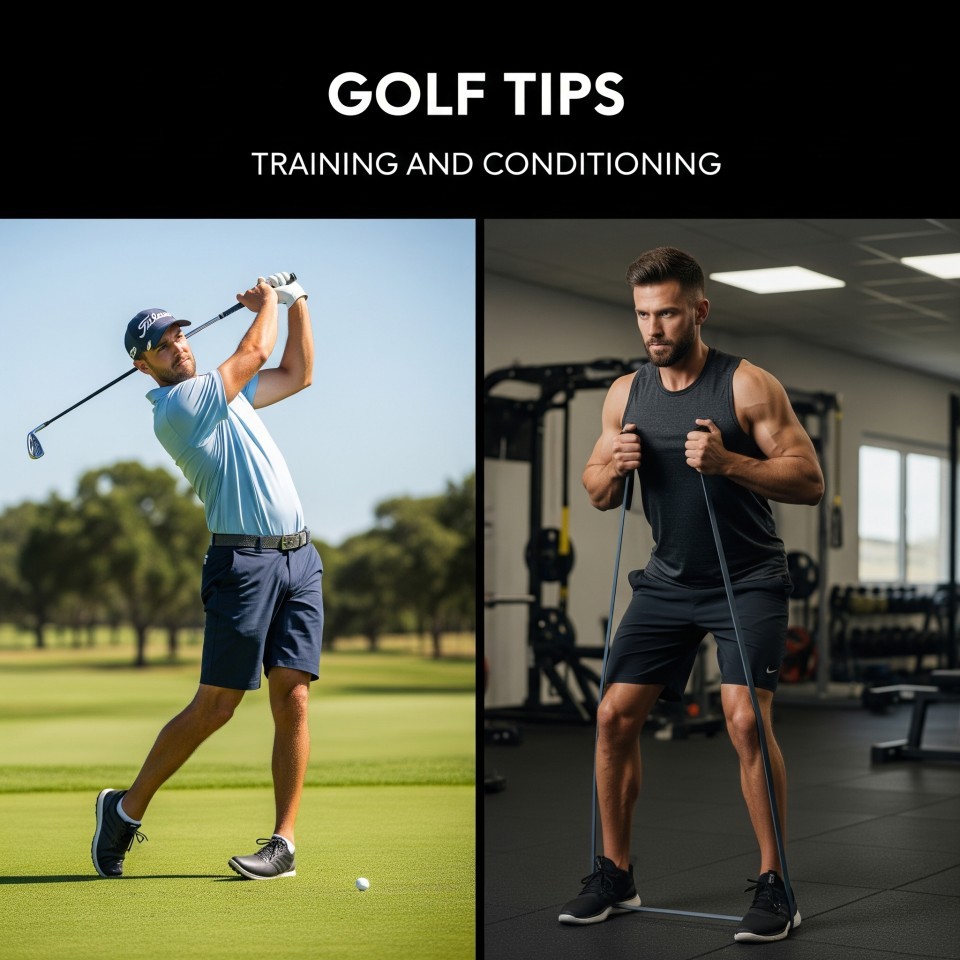Golfing News & Blog Articles
Training and Conditioning
Golf, while appearing to be a gentle sport, demands a significant level of physical conditioning, mental focus, and technical skill. To truly excel and avoid injury, a comprehensive training and conditioning program is essential. This document outlines key areas of focus to help golfers enhance their performance on the course.
The Importance of Physical Fitness in Golf
Many amateur golfers underestimate the physical demands of the game. A powerful and consistent golf swing requires strength, flexibility, balance, and endurance. Neglecting these aspects can lead to inconsistent play, reduced power, and a higher risk of injury.
Strength Training for Golfers
Developing golf-specific strength can dramatically improve your swing speed, power, and stability. Focus on compound movements that engage multiple muscle groups used in the golf swing.
Key Muscle Groups
- Core: The core is the powerhouse of the golf swing, connecting the upper and lower body. Exercises like planks, Russian twists, and medicine ball rotations are highly beneficial.
- Glutes and Legs: Strong legs provide a stable base and generate power in the downswing. Squats, lunges, and deadlifts are excellent for building lower body strength.
- Back and Shoulders: These muscles are crucial for controlling the club and generating clubhead speed. Rows, lat pulldowns, and overhead presses can improve strength and stability.
Sample Strength Exercises
|
Exercise |
Sets |
Reps |
Description |
|---|---|---|---|
|
Goblet Squat |
3 |
10 |
Hold a dumbbell vertically against your chest and perform a squat. |
|
Dumbbell Row |
3 |
10 |
Bend at the hips, keeping your back straight, and pull a dumbbell towards your chest. |
|
Medicine Ball Twist |
3 |
12 |
Sit on the floor, lean back slightly, and twist your torso side to side with a medicine ball. |
|
Plank |
3 |
30s |
Hold a push-up position with your forearms on the ground, keeping your body in a straight line. |
Flexibility and Mobility
Increased flexibility and mobility allow for a fuller, more fluid swing, reducing tension and improving range of motion. Tight muscles can restrict your swing, leading to compensations and potential injury.
Focus Areas
- Hips: Mobile hips are crucial for a proper turn and weight transfer. Hip flexor stretches and rotational movements are key.
- Thoracic Spine: A flexible upper back allows for a greater shoulder turn without straining the lower back. Cat-cow stretches and foam rolling can help.
- Shoulders: Good shoulder mobility is essential for club control and avoiding injury. Arm circles and dynamic stretches are beneficial.
Sample Flexibility Exercises
- Hip Flexor Stretch: Kneel on one knee, push your hips forward until you feel a stretch in the front of your hip.
- Thoracic Rotation: Lie on your side with knees bent, rotate your upper body, bringing your top arm to the other side.
- Arm Swings: Stand with feet shoulder-width apart, swing your arms forward and backward, then across your body.
Balance and Stability
A stable base is fundamental for consistent ball striking. Poor balance can lead to sway and loss of power during the swing.
Balance Drills
- Single-Leg Balance: Stand on one leg for 30-60 seconds, progressing to performing a golf swing motion.
- Bosu Ball Drills: Stand on a Bosu ball and practice mini-swings to challenge your stability.
Cardiovascular Endurance
While golf isn't a high-intensity cardio sport, walking 18 holes can be tiring. Good cardiovascular fitness helps maintain focus and energy levels throughout the round.
Recommended Activities
- Brisk walking
- Jogging
- Cycling
Integrating Training into Your Routine
Consistency is key. Aim for 2-3 strength training sessions, 3-5 flexibility sessions, and regular cardio each week. Listen to your body and prioritize proper form over heavy weights or excessive stretching.
Nutritional Considerations
Fueling your body correctly is as important as your physical training. A balanced diet provides the energy needed for workouts and rounds of golf.
Key Principles
- Hydration: Drink plenty of water before, during, and after your rounds and workouts.
- Protein: Essential for muscle repair and growth.
- Complex Carbohydrates: Provide sustained energy for the course.
- Healthy Fats: Important for overall health and hormone production.
Rest and Recovery
Allowing your body to recover is vital for performance and injury prevention. Adequate sleep and active recovery (light activity, stretching) are crucial.


